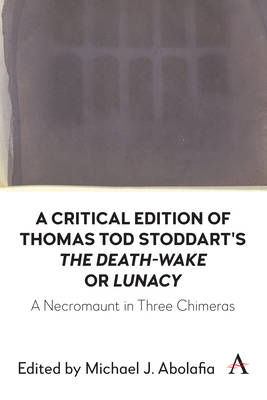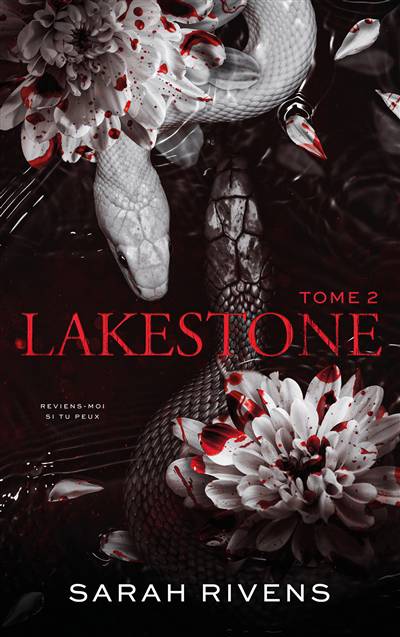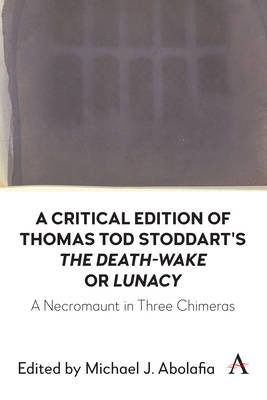
- Retrait gratuit dans votre magasin Club
- 7.000.000 titres dans notre catalogue
- Payer en toute sécurité
- Toujours un magasin près de chez vous
- Retrait gratuit dans votre magasin Club
- 7.000.0000 titres dans notre catalogue
- Payer en toute sécurité
- Toujours un magasin près de chez vous
A Critical Edition of Thomas Tod Stoddart's 'The Death-Wake' or 'Lunacy'
A Necromaunt in Three Chimeras
177,45 €
+ 354 points
Description
Thomas Tod Stoddart is best remembered, if at all, for his angling poems, but few know the significance of Stoddart's poetic output: when he burst onto the scene in 1831 as a 21-year-old romanticist with the incredible Gothic epic, The Death-Wake: Or Lunacy, a Necromaunt in Three Chimeras, he was anticipating Baudelaire, Poe and the Decadents, and crafting a new form of Scottish Gothic verse. Stoddart's poem is animated by a peculiar Gothic spirit: the title of the poem provides some indication of its utter strangeness and remarkable ubiquity. It tells the morbid and beautiful story of a monk who falls madly in love with a nun, Agathe, who dies in her youth. The monk, in a fit of madness, exhumes her body and voyages across the sea, encountering talking avatars of skeletons, a hermit and other sublime Gothic marvels.
The Death-Wake spawned imitations and parodies in major intellectual magazines such as Blackwood's, and Stoddart was also intimately associated with James Hogg and his intellectual circle. Yet most copies of the poem were either destroyed or lost, and it languished out of print until its mysterious afterlife in the hands first of Edgar Allan Poe and then later of Andrew Lang (of Lang's Fairy Tales fame). Edgar Allan Poe, as the editor of Graham's Magazine, reprinted a fragment of the poem in 1842 under a modified title, which was signed by one 'Louis Fitzgerald Tasistro', a mostly forgotten American lawyer, writer and acquaintance of Poe's. He had evidently plagiarised it, which caused a minor scandal. Praised by Poe, the poem's morbid themes uncannily intimate Poe's own obsessions in poems published around the same time (including 'Annabel Lee' and others). George MacDonald, the noted fantasist, owned and commented on the book as an inspiration for his otherworldly work. Later, in 1895, Andrew Lang, publisher of The Yellow Book, reprinted The Death-Wake under John Lane's imprint, bringing it to the readership of the 1890s and providing an introduction extolling its merits.
This project will reprint, introduce and contextualise Stoddart's poem for readers and, in the process, rediscover a Gothic writer of unparalleled imagination whose unique phantasmagoria are of as yet unexamined transatlantic cultural significance.
The Death-Wake spawned imitations and parodies in major intellectual magazines such as Blackwood's, and Stoddart was also intimately associated with James Hogg and his intellectual circle. Yet most copies of the poem were either destroyed or lost, and it languished out of print until its mysterious afterlife in the hands first of Edgar Allan Poe and then later of Andrew Lang (of Lang's Fairy Tales fame). Edgar Allan Poe, as the editor of Graham's Magazine, reprinted a fragment of the poem in 1842 under a modified title, which was signed by one 'Louis Fitzgerald Tasistro', a mostly forgotten American lawyer, writer and acquaintance of Poe's. He had evidently plagiarised it, which caused a minor scandal. Praised by Poe, the poem's morbid themes uncannily intimate Poe's own obsessions in poems published around the same time (including 'Annabel Lee' and others). George MacDonald, the noted fantasist, owned and commented on the book as an inspiration for his otherworldly work. Later, in 1895, Andrew Lang, publisher of The Yellow Book, reprinted The Death-Wake under John Lane's imprint, bringing it to the readership of the 1890s and providing an introduction extolling its merits.
This project will reprint, introduce and contextualise Stoddart's poem for readers and, in the process, rediscover a Gothic writer of unparalleled imagination whose unique phantasmagoria are of as yet unexamined transatlantic cultural significance.
Spécifications
Parties prenantes
- Editeur:
Contenu
- Nombre de pages :
- 200
- Langue:
- Anglais
- Collection :
- Tome:
- n° 1
Caractéristiques
- EAN:
- 9781839994128
- Date de parution :
- 03-02-26
- Format:
- Livre relié
- Format numérique:
- Genaaid
- Dimensions :
- 152 mm x 229 mm
- Poids :
- 453 g

Les avis
Nous publions uniquement les avis qui respectent les conditions requises. Consultez nos conditions pour les avis.





